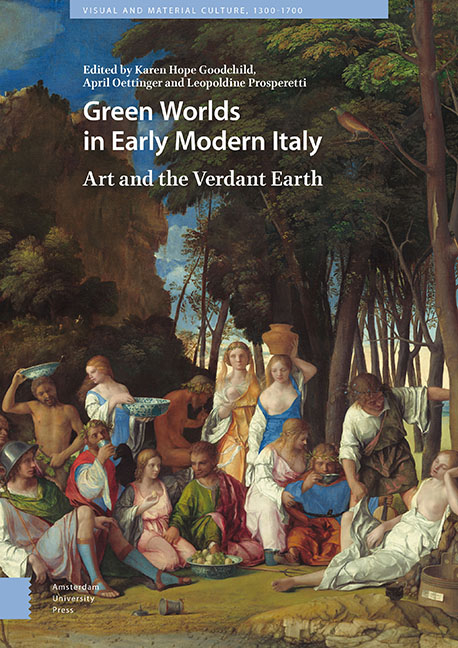Book contents
10 - The Verdant as Violence: The Storm Landscapes of Herman van Swanevelt and Gaspard Dughet
Published online by Cambridge University Press: 21 November 2020
Summary
Abstract
Land storms did not become a significant subject in the history of Italian art until the mid-seventeenth century when they appear as a well-developed sub-genre of landscape painting, notably in the works of two artists, Gaspard Dughet (1615–75) and Herman van Swanevelt (c.1603–55). However, it is unclear from existing literature with which artist the theme originated. This essay will elucidate the problem of assigning credit for the storm scene's invention. Close examination will clarify Dughet’s and Swanevelt's roles in the development of the new genre, especially the treatment of phenomenological aspects of stormy weather. The storm scene's origins in artistic precedent and theory, the literature of classical antiquity and the climatic conditions of seventeenth-century Europe will also be addressed.
Keywords: Swanevelt, Dughet, Cassiano dal Pozzo, storm scenes, climatic change
In 1651 Nicolas Poussin (1596–1664) wrote to his friend in Paris, the painter, Jacques Stella (1596–1657), on the fundamental role of the storm in his composition Landscape with Pyramus and Thisbe (1651, Städlisches Kunstinstitut, Frankfurt am Main), describing at length the exact meteorological effects he aimed at creating in his tale of Ovid’s star-crossed lovers (Met. IV). In the painting the distraught Thisbe rushes towards the supine Pyramus while lightning flashes in a dark, threatening sky and a raging storm tosses the leaves and limbs of trees, the whole conveying both nature's fury and Thisbe's emotional turmoil. It has been called an ‘ekphrastic masterpiece’, in which Poussin aimed to equal the mimetic abilities of two famous forerunners, the ancient Greek painter, Apelles, and the Renaissance master, Leonardo da Vinci (1452–1519), whose recommendations for how to represent a land storm in his Trattato della pittura Poussin appears to have followed carefully. Poussin showed trees that Leonardo recommended should ‘bend to earth almost as though they wished to follow the course of the winds’, as well as meteorological effects such as ‘smoky clouds, which, struck by the sun's rays […] descend to earth, lighting it up with their beams’ and ‘infuriated bolts of lightning’ that illuminate ‘the shadowed countryside in various places’. Clearly Leonardo's text motivated Poussin to explore the possibilities of the land storm – a subject far less common than the storm at sea in mid-seventeenth-century Roman art – and inspired him to create one of his most memorable landscapes.
- Type
- Chapter
- Information
- Green Worlds in Early Modern ItalyArt and the Verdant Earth, pp. 217 - 240Publisher: Amsterdam University PressPrint publication year: 2019



